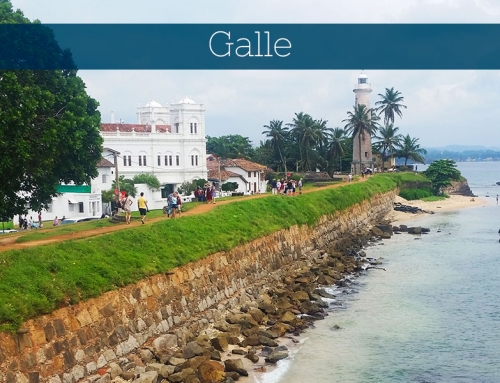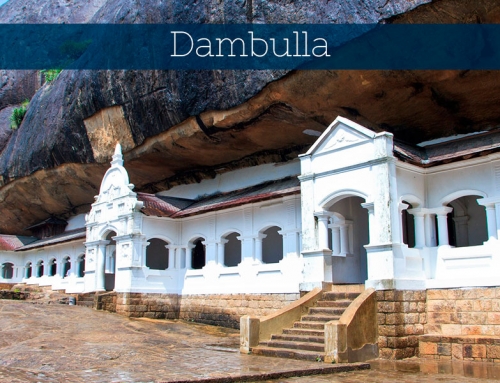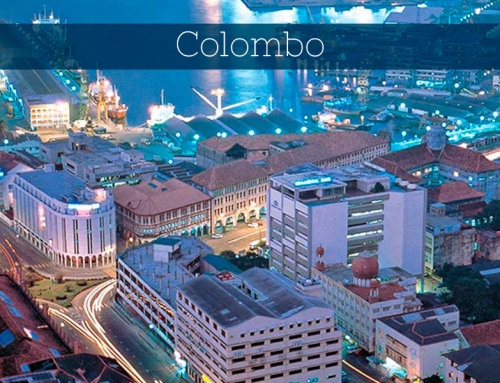According to records, the city of Kandy, then known as Senkadagalapura, was initially founded in the Central province, north of the present city in the Wattapuluwa area in the mid 14th century during the reign of Vickramabaghu III in Gampola. The city not only had ample natural defenses in the form of rocky hills and dense jungle, but also weather conditions and insects that were repellant to attackers. The city continued under the rule of Kotte until the arrival of the Portuguese and during which the Kotte rule weakened, and the region became autonomous with Senkadagalapura as its capital. However the true rise of Kandy as a kingdom was during the 16th century, when with the patricide of the Kotte king Vijayabaghu in 1521, the Kotte kingdom split into three competing states; Sitawaka, Raigam and the original Kotte, leaving the autonomous Kandy as the stronger kingdom.
With its rise in a turbulent period of war and political unrest, Kandy used any and all weapons in its reach to survive and prosper. It made alliances if needed or when that did not work fought with all the strength it had. When neither worked, the royal families fled to safer haven and returned to defeat their conquerors. Though some of the kings of Kandy are blamed for forming alliances with the Portuguese or Dutch which later enabled invasions, it is also true that they were simply doing what they thought was best, in order to survive and protect their kingdom. Kandy endured, at least to some extent, during the Portuguese and Dutch revolution, however the kingdom was ended completely during the British Empire’s era. Though there were several rebellions during the British rule, Kandy failed to rise again.
Kandy’s economy was based mostly on spices. The iron industry too was encouraged by its kings. The kingdom had a complex government structure and its own separate rules and judicial system. Due to the influence of its alliances with Jaffna and the Nayakka kingdoms, Hinduism was also widely practiced although Buddhism was the main religion. The Temple of the Tooth, built around the Tooth relic of Buddha which was brought to Kandy late in the 16th century for protection, lies close to the ruins of the Royal Palace proving that Buddhism was the main court religion supported by the Kings of Kandy.
Kandy is a UNESCO World Heritage Site famed for its dark and bloody history, which contrasts with the calm peaceful shades of Buddhism which is the dominant religion of the area. With its vibrant city, architecturally beautiful pagodas of the Temple of the Tooth, historic ruins, abundant nature, and fine climate, Kandy is great place to visit when in Sri Lanka.

Sites of interest
-
Kandy Lake: A lovely centrepiece to the town. Kandy Lake was created in 1807 by Sri Wickrama Rajasinha, the last ruler of the kingdom of Kandy. Several small-scale local chiefs, who protested because their people objected to labouring on the project, were put to death at stakes in the lake bed. The island in the centre was used as Sri Wickrama Rajsinha’s personal harem, to which he crossed on a barge. Later the Birtish used it as an ammunition store and added the fortress style parapet around the perimeter of the lake. On the south shore, in fornt of the Malwatte Vihara, there’s a circular enclosure which is the monk’s bathouse.
-
Kandy Museum: The latest institution added to the Dalada Shrine is the `Sri Dalada Museum’. Ever since the Tooth Relic shrine was established in Kandy, different grades of visitors and devotees, ranging from the Roylty and Heads of States to the poorest of the general public, have been offering various gifts to the Sacred Tooth Relic, and these were preciously protected in specially built store-rooms by the successive line of Diyawadana Nilames. THE DALADA MUSEUM is located on the first and the second floors of the new wing called the Alut Maligawa set up by one of the past Diyawadana Nilemes, T.B.Nugawela. The display on the first floor consists of historical records from the time when the Tooth Relic was brought to Sri Lanka to the time of the British rule.
-
Peradeniya Gardens: Peradeniya Gardens Situated in the Hill capital Kandy. Visit to this garden will provide spectacles at extraordinary beauty and absorbing interest for any nature lover and casual visitor. 68 miles off-Colombo, 4 miles off Kandy this garden dates from 14th century reign of king Vikrama Bahu III. Peradeniya is well know for it’s large variety of plants ornaments, useful machine and other creepers that produce the special spices at Sri Lanka. The great lawns highlight huge tropical trees and variety at bamboo can be found in one place.The best know attraction of the garden is the orchid House, which houses more than 300 varieties of exquisite orchids. A spice garden gives you a first hand introduction to the trees and plants used for the traditional Ayurvedic medicine.
-
Hanthana Mountion: Hanthana is a range of mountains spread on the outskirts of Kandy from which many glorious rivulets and streams flow. One such stream flows past the village of Udaperadeniya and the University.
-
Knukles: Its name describes its outline. The Knuckles Range consists of the Knuckles massif, the Knuckles range and the Knuckles peaks. The Knuckles massif is about 90 square miles in extent and is a detached block of the central highlands separated from the main highlands by the the Dumbara Valley. There are 35 peaks rising to more than 3000 feet (915 m) in the Knuckles range. It has a rich variety of plant and animal life. Mammals include leopards, sambhur, mouse deer, barking deer, sloth deer, leaf monkeys, toque monkeys, wild squirrels, giant squirrels, wild boar, otter and lorries. Besides these, many species of amphibians, reptiles, butterflies, spiders, fish and birds can be found here.
-
Temple of the Tooth: Located in Kandy, long a center of the Buddhist faith, the stunning 17th-century Temple of the Tooth (Sri Dalada Maligawa) is believed to house the left upper canine tooth of the Lord Buddha himself. This precious relic attracts white-clad pilgrims, bearing lotus blossoms and frangipani, every day.
According to legend, the tooth was taken from the Buddha as he lay on his funeral pyre. It was smuggled to Sri Lanka in 313 AD, hidden in the hair of Princess Hemamali who fled the Hindu armies besieging her father’s kingdom in India.
It immediately became an object of great reverence and was enshrined in a series of nested jeweled reliquaries. The tooth was brought out for special occasions and paraded on the backs of elephants, which are sacred to the Buddha. where it survived numerous attempts to capture and destroy it.
When the capital was moved to Kandy, the tooth was taken to the new city and placed in temples built to honor it. The temple was originally built under Kandyan kings between 1687 and 1707, but later severely damaged during the 18th-century colonial wars against the Portugese and Dutch. After the wars, the original wooden structures were restored in stone.
-
Lankatilake Temple: Lankatilake Temple is a 1.5km stroll along a path through the price paddies until you see the blue temple loom up on the left. It’s a Buddhist and Hindu temple with fine views of the countryside, featuring a buddha image, Kandy-period paintings, rock-face image, Kandy-period paintings, rock-face inscriptions and stone elephant figures.
-
Gadaladeniya Temple: Gadaladeniya Viharaya Pilimatalawa, Kandy Built almost exclusively of stone in 1344 by the Gampola King Wicramabahu, situated on a hilltop, commanding views of the surrounding countryside.A moonstone marks the entrance to the main shrine. The architecture is Dravidian. The entrance porch features large stone pillars which support a roof of huge stone slabs.cted food offerings for centuries. Within the vihara, an ancient stone and plaster Buddha image looks down upon milk rice pots that have colle The 638 year old jak wood doors still exhibit their original paintings.
-
Monatastires: Kandy’s principal Buddhist vhiaras (monastires) have considerable importance – the high priests of the two best known, Malwatte and Asgiriya, are most important in Sri Lanka. These temples are the headquaters of two of the main Nikayas, or orders of monks. The priest also play an important role in the administration and operation of the Temple of the Tooth, while the Agiriya Vihara is on the hill off Wariyapola Sri Sumanga Mawatha to the morthwest of the towen centre, an has a large reclining Buddha image.








